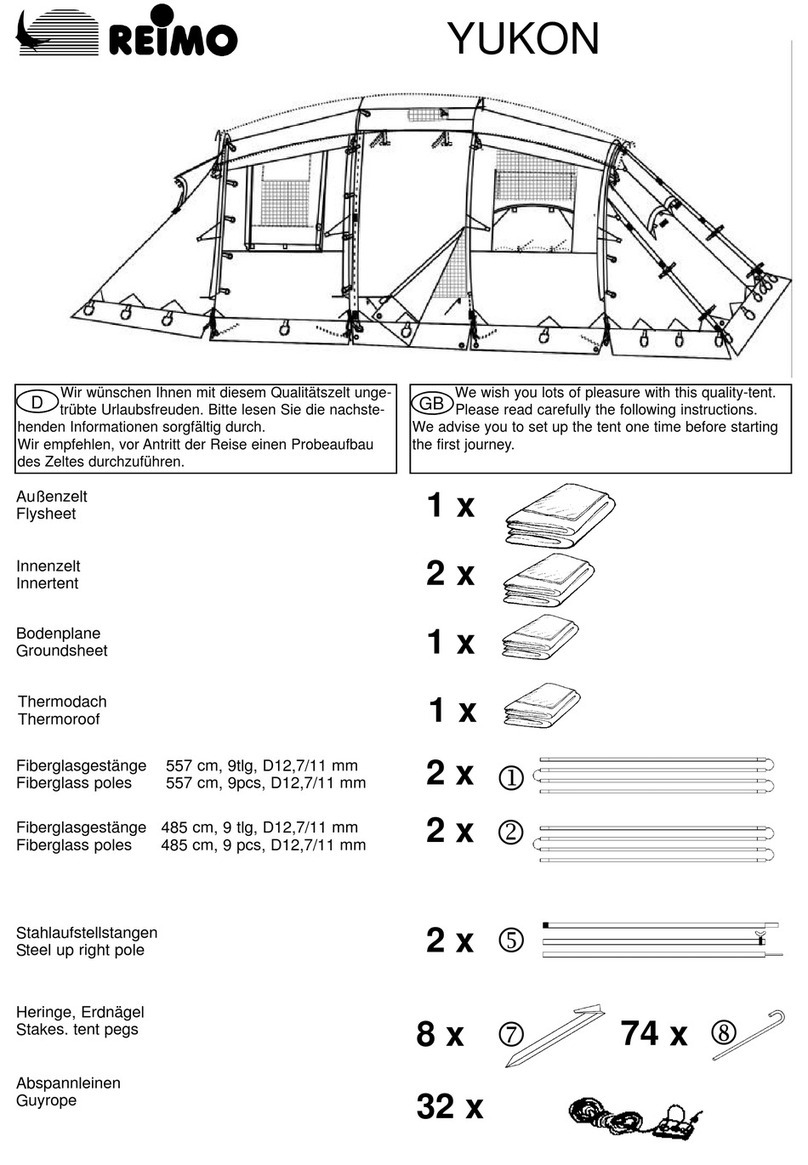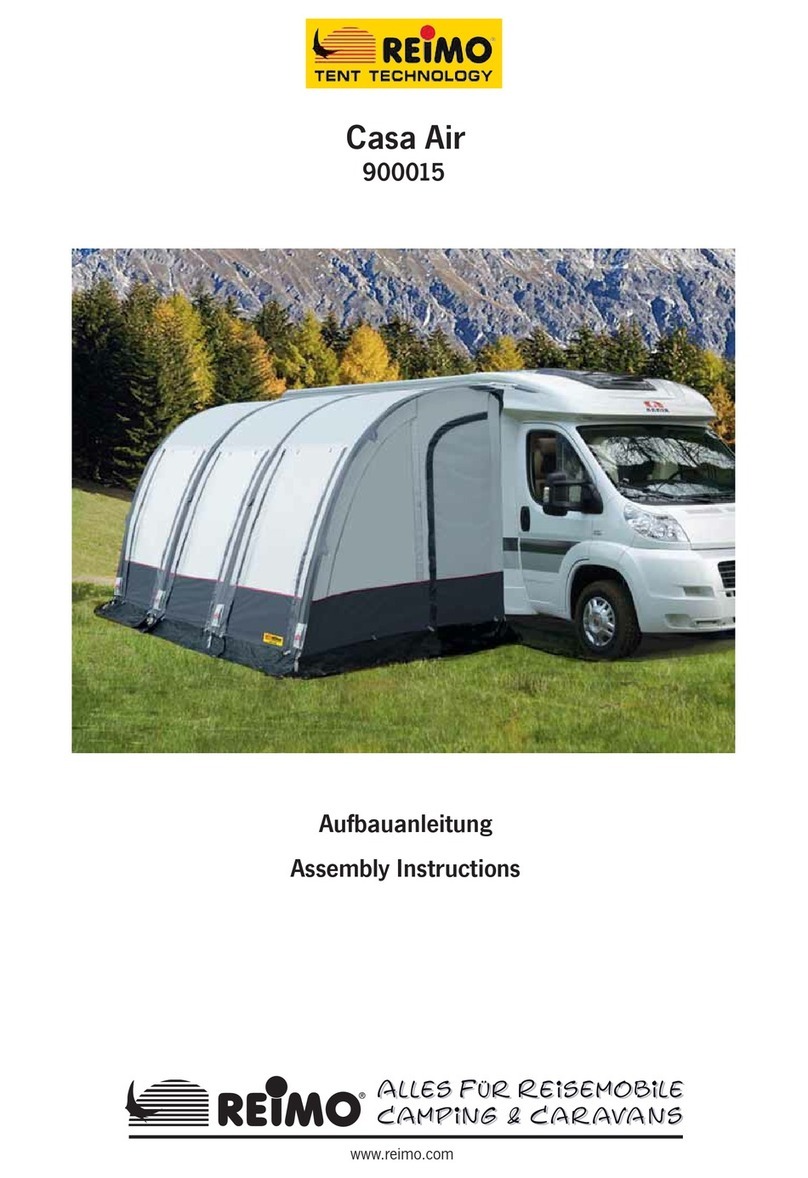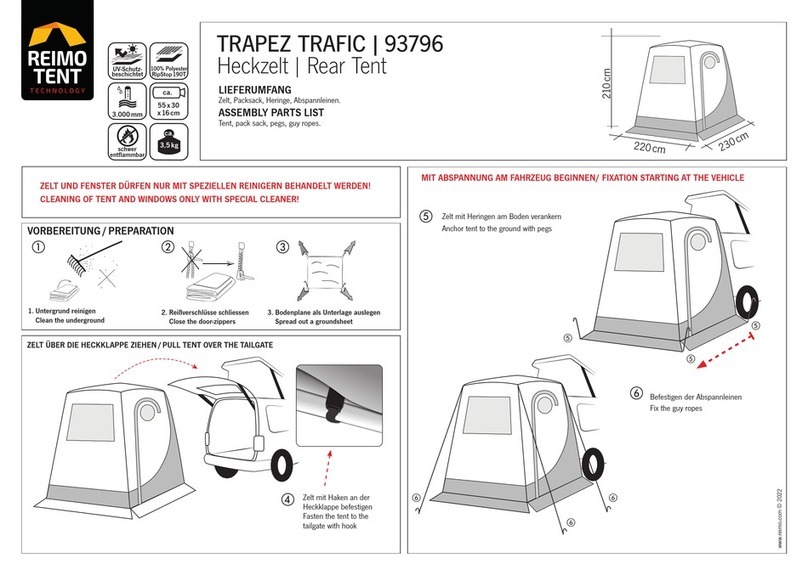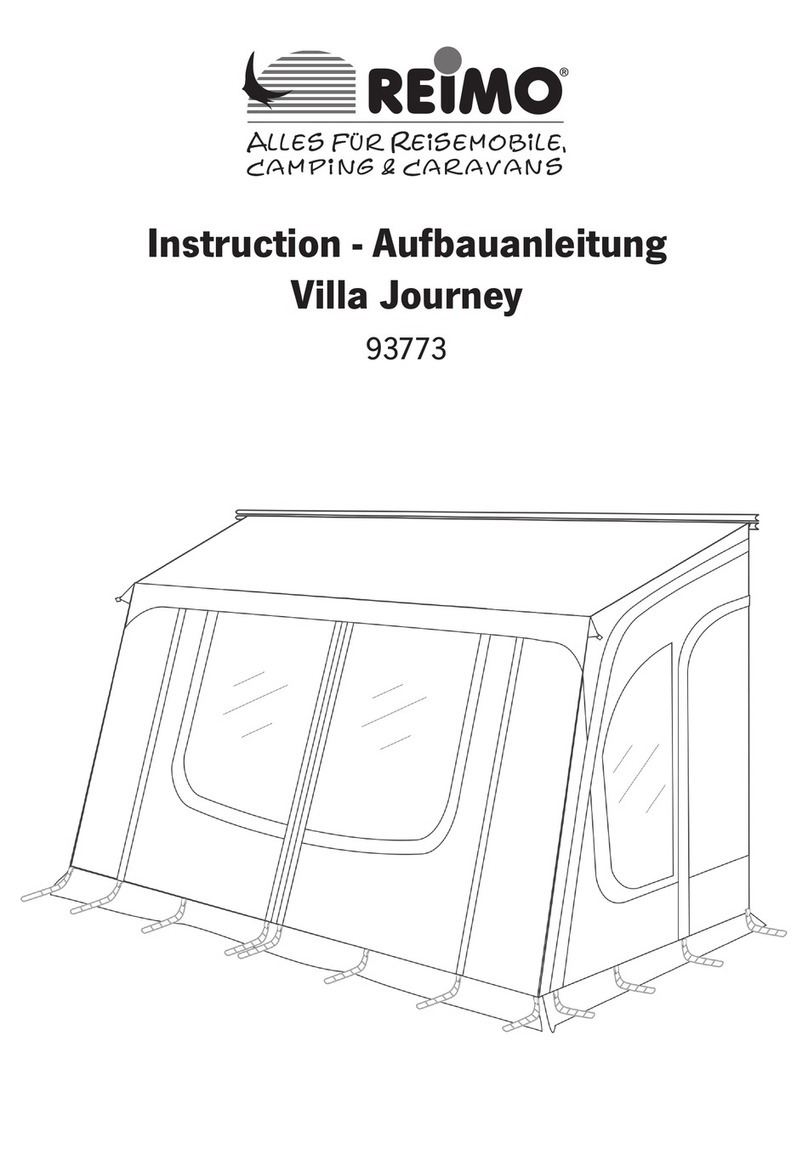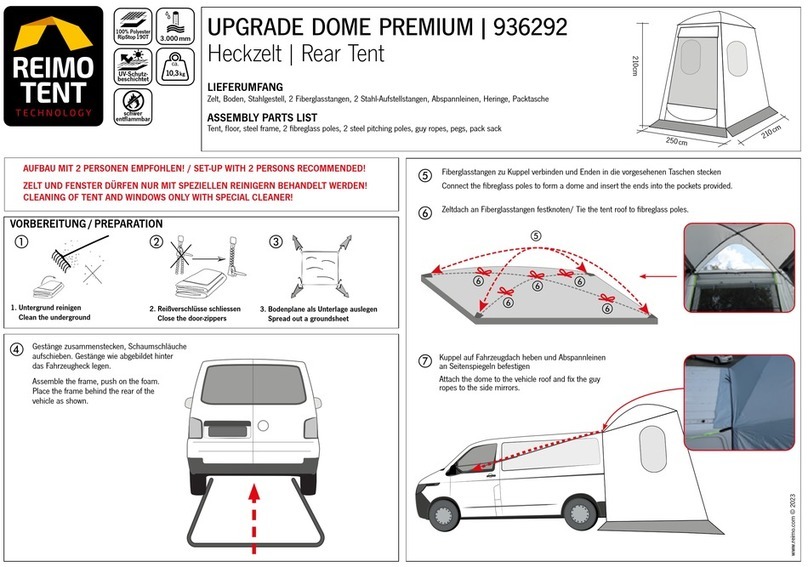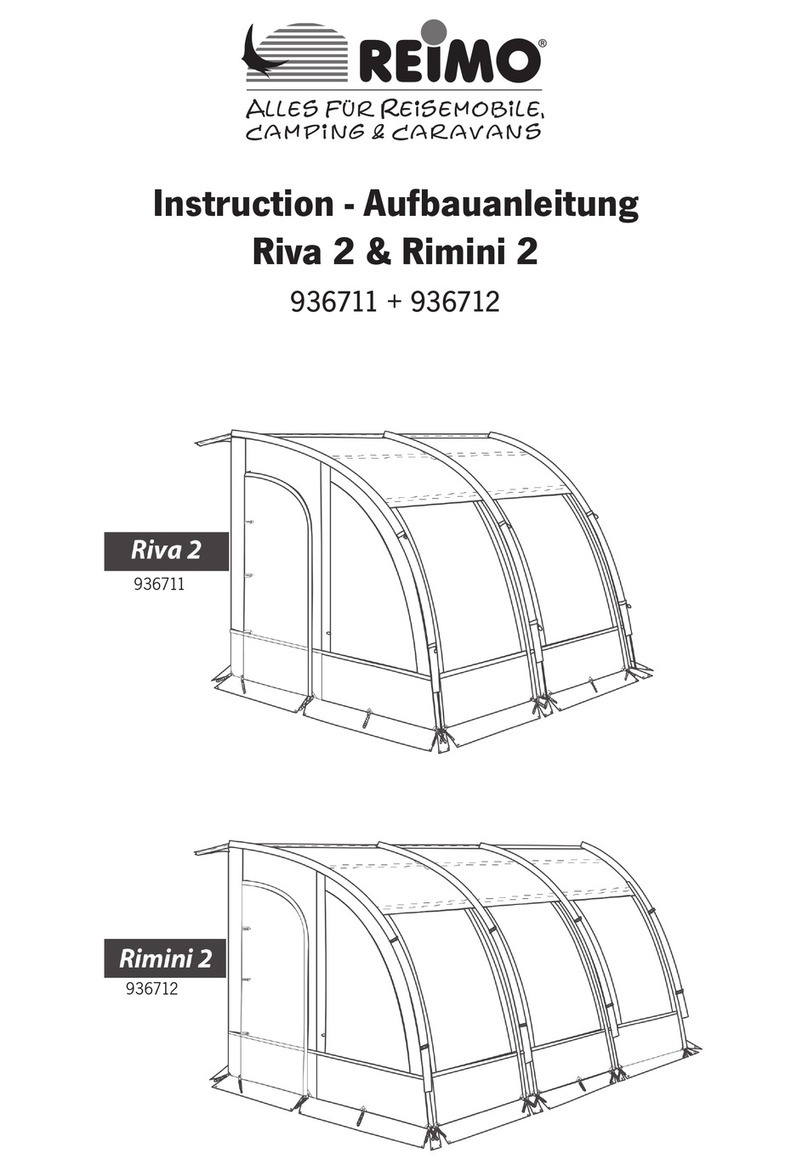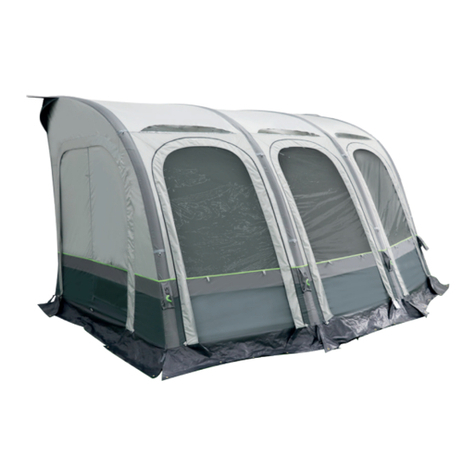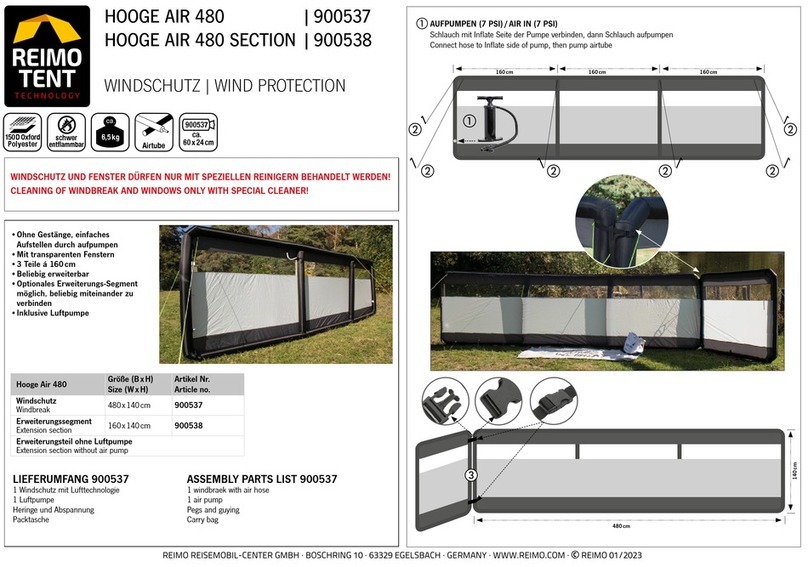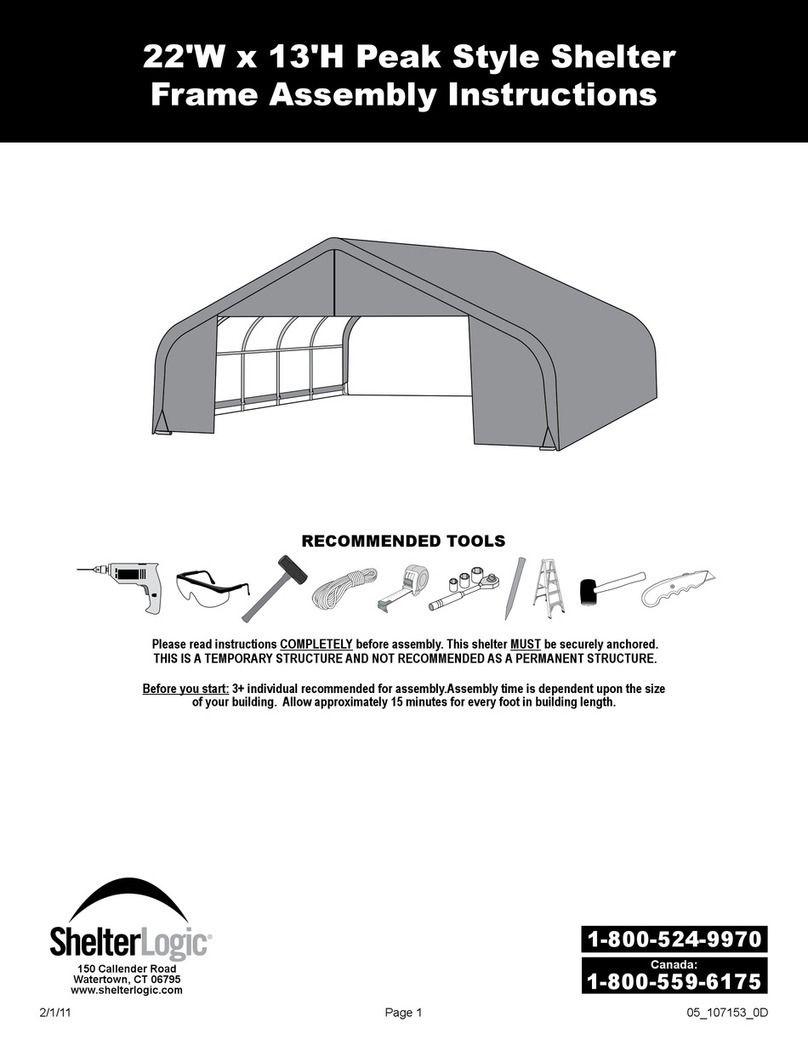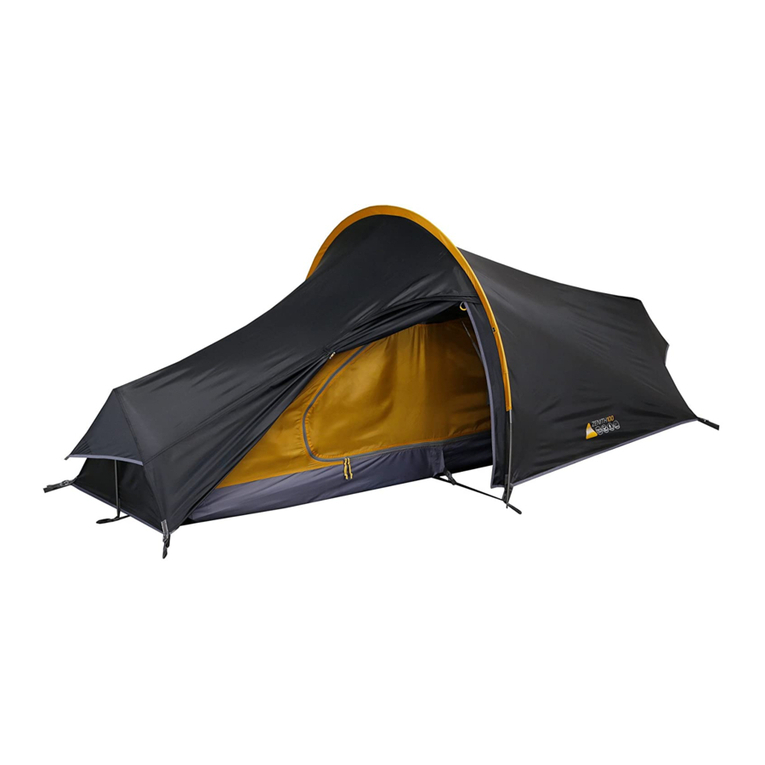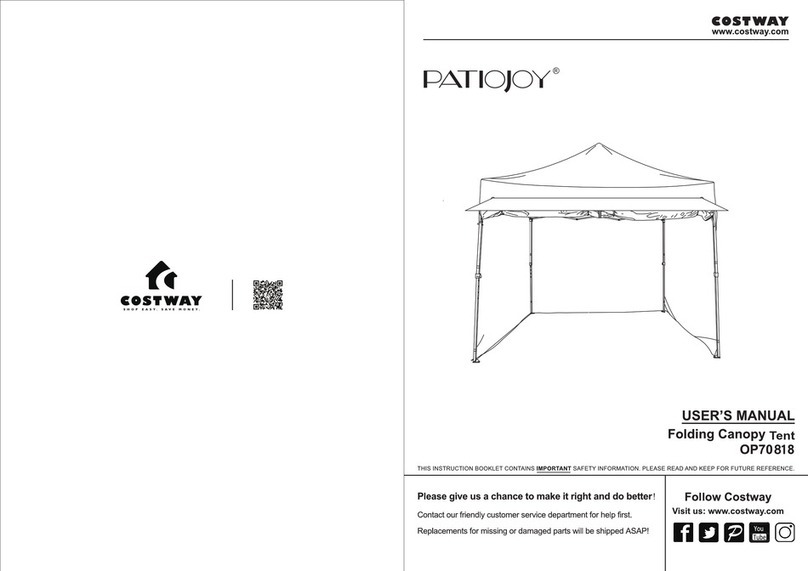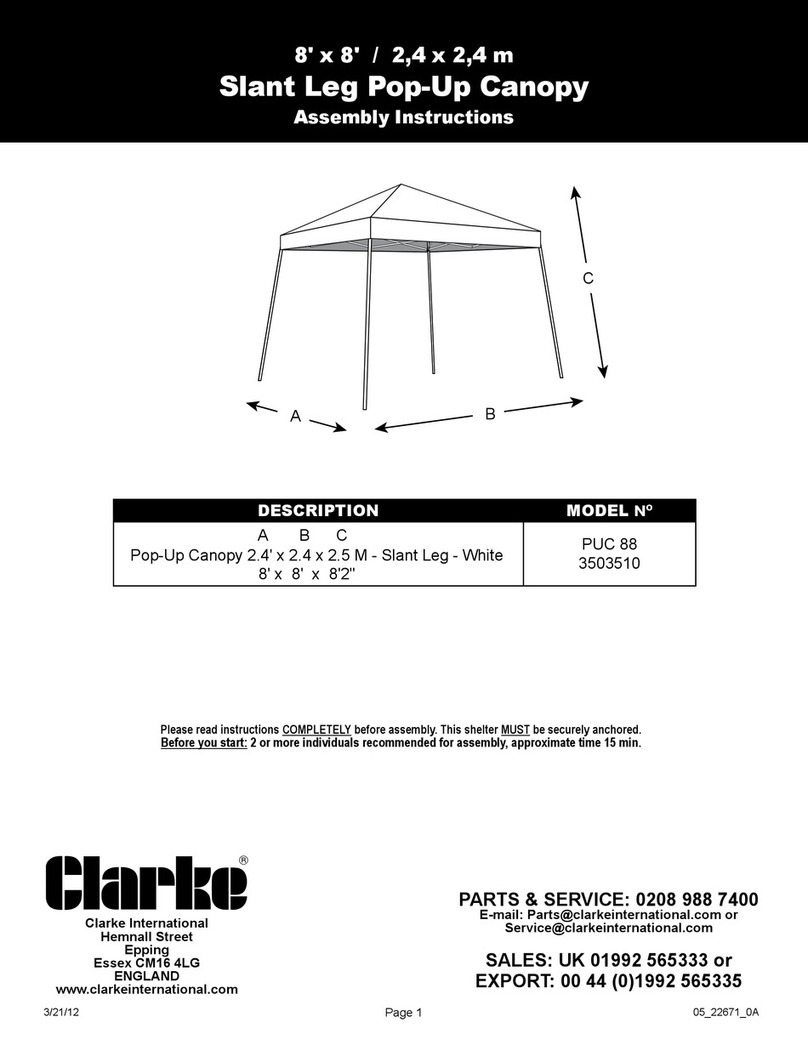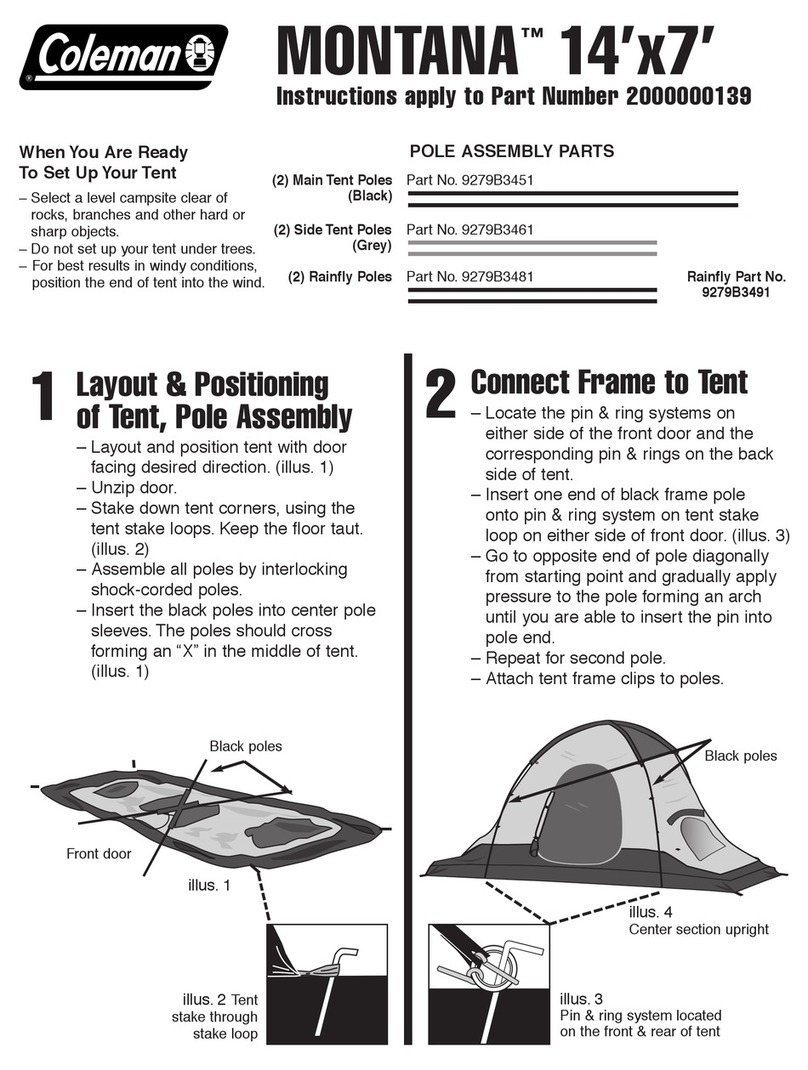
5
DER LUFTKAMMER-RAHMEN
• Der Rahmen besteht aus 3-lagigen Luftschläuchen, welche sich in Reißver-
schluss-Schutzhüllen befinden. So sind diese sicher, geschützt und lassen
sich bei Bedarf einfach austauschen.
• Der innere Luftschlauch besteht aus einem extra stabilen TPU-Material,
welches robust und wetterbeständig ist und lange halten wird.
• Die Schutzhüllen bestehen aus einem robusten, stichfesten PE-Material. Die
Schutzhüllen werden an Hülsen an der Innenseite des Zeltes per Reißver-
schluss befestigt.
• Die Reißverschlüsse von Schutzhülle und Hülse müssen mit Verbindern
(z.B. Kabelbindern) aneinander befestigt sein. Diese Verbinder sollten
bei normaler Nutzung niemals entfernt werden. Die Reißverschlüsse
dürfen Sie nicht öffnen. Entfernen Sie diese nur, wenn Sie einen Luft-
schlauch entfernen, ersetzen oder reparieren müssen. Wenn Sie die
Verbinder entfernen, muss dies geschehen bevor Sie das Zelt aufpum-
pen, da Sie sonst die Luftschläuche beschädigen oder auch durchste-
chen könnten, was nicht durch die Garantie abgedeckt wird.
• Um sicherzustellen, dass sich das aufblasbare Gestänge in der richtigen Po-
sition befindet, achten Sie bitte darauf, dass der Klettverschluss der Kammer
mit dem Klettverschluss am Zeltboden verbunden ist.
ABOUT THE INFLATABLE FRAME
• The frame is made up of air tubes which are placed inside zipped protective
covers making them secure, protected and easy to replace if required.
• The air tubes themselves are made of very strong TPU material which is
strong, resistant to weather and will last for years.
• The protective covers are made from a strong, puncture resistant PE materi-
al. The protective cover is zipped inside the sleeve on the awning.
•
The zips on the sleeve and protective cover are locked together with ties.
These ties should never be removed under normal use. They are only to
be removed,if you need to remove, replace or repair your air tube.
If you do remove the ties then you must replace them before inflating
your awning otherwise you could cause damage to the air tube, even
puncturing it which is not covered under your warrranty.
• To ensure the air tube frame is in the correct position, please check that the
protective cover is located on the velcro pads at all times.
!!ACHTUNG!!
Die Reißverschlüsse von Schutzhülle und Hülse müssen mit Verbindern
(z.B. Kabelbindern) verriegelt werden. Diese Verbinder sollten bei norma-
ler Nutzung niemals entfernt werden. Die Reißverschlüsse dürfen sich
nicht öffnen können. Wenn dieser Verbinder entfernen wurde, können
die Luftschläuche und auch ihr Zelt beschädigt oder durchstochen
werden, was nicht durch die Garantie abgedeckt wird.
Pumpen Sie die Luftschläuche niemals auf, wenn einer der beiden Reiß-
verschlüsse geöffnet ist.
!!ATTENTION!
The zips on the air tube sleeve and protective cover are locked together
by a plastic tie. Never remove this plastic tie under normal use. If this tie
is removed then it could cause damage to your air tubes or awning and
is not covered by the warranty.
Never inflate the air tube if either of the zips are undone.
a
c
b
aSchlauch / Sleeve
bPE Überzug / PE Cover
cReißverschluss / Zipper
93539_OneBeamAir_A4_bs.indd 5 20.08.18 10:24
